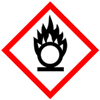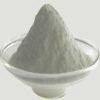Anmol Chemicals is the pioneer manufacturers of Potassium Bromate, Pharmaceutical Excipients Chemicals in India. We offer Halal and Kosher Potassium Bromate made in an ISO9001, ISO22000 (FSSC22000) and cGMP certified facility. Our group has several manufacturing facilities spread across the world, supported by toll manufacturers and representatives in UAE, Europe, Africa, USA, China and has several associated manufacturing facilities spread across India. All the Information on Physics, Chemistry, Applications, Uses and Technology on Manufacture of Potassium Bromate is in these pages. |
| The units have one or more of the certifications like FDA GMP, ISO 9001, ISO 22000, HACCP, REACH, Kosher & Halal |
Potassium Bromate SDS of Manufactures Suppliers Exporters
CAS No.: 7758-01-2, EC Code EINECS: 231-829-8, Molecular Weight: 167.00, Chemical Formula: KBrO3
Properties and Specifications of Potassium Bromate Manufacturers
Potassium Bromate SDS, Safety Data Sheet
MSDS Sheet, Material Safety Data Sheet
1. Product Identification
Product Name & Other Names: Potassium Bromate.
CAS No.: 7758-01-2
EINECS EC No.: 231-829-8
Molecular Weight: 167.00
Chemical Formula: KBrO3
Relevant uses and uses advised against (if any): Industrial Manufacturing.
2. Hazards Identification
GHS, Globally Harmonized System Classification in accordance with 29 CFR 1910
Classification according to Regulation (EC) No 1272/2008
Oxidizing liquids; Oxidizing solids Category 1 - H271
Acute toxicity, oral Category 3 - H301
Carcinogenicity Category 1B - H350
Labeling according to GHS & Regulation (EC) No 1272/2008
GHS Label Elements  Oxidizing Solid |
GHS Label Elements |
GHS Label Elements |
Signal Words: Danger
Hazard statements:
H271: May cause fire or explosion; strong oxidizer.
H301: Toxic if swallowed.
H350: May cause cancer.
Precautionary statements:
P201: Obtain special instructions before use.
P210: Keep away from heat/sparks/open flames/hot surfaces – No smoking.
P220: Keep/Store away from clothing/…/combustible materials.
P221: Take any precaution to avoid mixing with combustibles.
P264: Wash … thoroughly after handling.
P270: Do not eat, drink or smoke when using this product.
P273: Avoid release to the environment.
P280: Wear protective gloves/protective clothing/eye protection/face protection.
P330: Rinse mouth.
P308 + P313: IF exposed or concerned: Get medical advice/ attention.
P370+378: In case of fire: Use water spray, alcohol-resistant foam, dry chemical or carbon dioxide for extinction.
P301+310: IF SWALLOWED: Immediately call a POISON CENTER or doctor/physician.
P391: Collect spillage.
P405: Store locked up.
P501: Dispose of contents/container to authorized agents only.
Classification according to EU Directives 67/548/EEC or 1999/45/EC:
Hazard Symbols:
T = Toxic
O = Oxidizer
Risk Phrases:
R 8 = Contact with combustible material may cause fire.
R 25 = Toxic if swallowed.
R45 May cause cancer.
3. Composition/Information on Ingredients
Product Name & Other Names: Potassium Bromate.
CAS No.: 7758-01-2
EINECS EC No.: 231-829-8
4. First Aid Measures
Always get medical attention after the first aid is over.
Inhalation: If inhaled, remove to fresh air. If breathing is difficult, give oxygen. Get medical attention.
Ingestion: Do not induce vomiting unless directed to do so by medical personnel. Never give anything by mouth to an unconscious person. If this material is swallowed, call a physician immediately. Loosen tight clothing. Get medical attention.
Skin Contact: Immediately flush skin with plenty of water for at least 15 minutes while removing contaminated clothing and shoes. Get medical attention. Wash clothing before reuse. Thoroughly clean shoes before reuse.
Eye Contact: Check for and remove any contact lenses. In case of contact, immediately flush eyes with plenty of water for at least 15 minutes. Get medical attention.
5. Fire Fighting Measures
Fire: Not combustible, but substance is a strong oxidizer and its heat of reaction with reducing agents or combustibles may cause ignition.
Explosion: May explode when shocked, exposed to heat or flame, or by spontaneous chemical reaction. Sealed containers may rupture when heated. Sensitive to mechanical impact.
Fire Extinguishing Media: Dry chemical, carbon dioxide, Halo, water spray, or fog. If water is used, apply from as far a distance as possible. Water spray may be used to keep fire exposed containers cool. Do not allow water runoff to enter sewers or waterways. Use flooding quantities of water as spray. Cool containers with flooding quantities of water until well after fire is out.
Special Information: In the event of a fire, wear full protective clothing and NIOSH-approved self-contained breathing apparatus with full face piece operated in the pressure demand or other positive pressure mode. At high temperatures under fire conditions, it may produce toxic or irritating fumes. Fire-extinguishing work is done from the windward and the suitable fire-extinguishing method according to the surrounding situation is used. Uninvolved persons should evacuate to a safe place.
Special hazards arising from the substance or mixture: Hydrogen bromide gas, Potassium oxides.
6. Accidental Release Measures
Personal precautions, protective equipment and emergency procedures: Avoid breathing dust/fumes/gas/mist/vapors/spray. Use individual protective equipment (waterproof boots, suitable protective clothing, safety glasses, etc.). Restrict unprotected personnel from the area. Prevent any contact with hot surfaces. Do not approach facing the wind. Do not touch the spilled material.
Environmental precautions: Do not let the product enter drains, soil or water sources.
Methods and materials used for containment Cleanup procedures and Storage:
Small Spill: Use appropriate tools to put the spilled solid in a convenient waste disposal container.
Large Spill: Oxidizing material.Stop leak if without risk. Avoid contact with a combustible material (wood, paper, oil, clothing...). Avoid dust formation. Avoid breathing vapors, mist or gas. Ensure adequate ventilation. Evacuate personnel to safe areas. Avoid breathing dust. Keep the substance damp using water spray. Do not touch spilled material. Prevent entry into sewers, basements or confined areas; dike if needed. Call for assistance on disposal.
7. Handling and Storage
Precautions for safe handling: Apply according to good manufacturing and industrial hygiene practices. Ensure proper ventilation. Provide appropriate exhaust ventilation at places where dust is formed. Keep away from sources of ignition - No smoking. Keep away from heat and sources of ignition. Wash thoroughly after handling. Do not drink, eat or smoke while handling. Avoid contact with skin, eyes and clothing. Minimize dust generation. Avoid breathing dust/fumes/gas/mist/vapors/spray. Avoid contact with eyes, skin, and clothing. Keep container tightly closed. Avoid ingestion and inhalation. Use individual protective equipment (waterproof boots, suitable protective clothing, safety glasses, etc.). Prevent any contact with hot surfaces.
Conditions for safe storage, including any incompatibilities: Store in cool, dry and ventilated area away from heat sources and protected from sunlight in tightly closed original container. Keep air contact to a minimum. Do not leave the material container open. Store protected from heat, sparks and ignition sources and incompatible materials. Avoid contact with skin and eyes. Avoid inhalation of dust/mist/vapor. Do not store with incompatible materials like strong reducing agents, powdered metals, strong acids. Avoid storage on wood floors. Separate from incompatibles, combustibles, organic or other readily oxidizable materials. Containers may be hazardous when empty since they retain product residues.
8. Exposure Controls/Personal Protection
Airborne Exposure Limits: TWA 0.1 mg/m3 USA, Workplace Environmental Exposure Levels (WEEL).
Ventilation System: A system of local and/or general exhaust is recommended to keep employee exposures as low as possible. Local exhaust ventilation is generally preferred because it can control the emissions of the contaminant at its source, preventing dispersion of it into the general work area.
Personal Respirators (NIOSH Approved): For conditions of use where exposure to dust or mist is apparent and engineering controls are not feasible, a particulate respirator (NIOSH type N95 or better filters) may be worn. If oil particles (e.g. lubricants, cutting fluids, glycerin, etc.) are present, use a NIOSH type R or P filter. For emergencies or instances where the exposure levels are not known, use a full-face positive-pressure, air-supplied respirator.
Skin Protection: Wear impervious protective clothing, including boots, gloves, lab coat, apron or coveralls, as appropriate, to prevent skin contact.
Other Control Measures: Maintain good housekeeping in work area. Dust deposits on floors and other surfaces may pick up moisture and cause the surfaces to become slippery and present safety hazards. Handle in accordance with good industrial hygiene and safety practice. Wash hands after handling.
9. Physical and Chemical Properties
Appearance: Off-white crystals or powder.
Odor: Odorless.
Odor threshold: Not available.
pH: 5 - 9
Relative density: 3.2
Boiling Point: Decomposes
Melting Point: 350C Flash point: Not available.
Auto-ignition temperature: Not available.
Decomposition temperature: Not available.
Upper/lower flammability or explosive limits: Not available.
Vapor pressure: Not available.
Vapor density: Not available.
Evaporation rate: Not available.
Flammability (solid, gas): Not available.
Partition coefficient: n-octanol/water: Not available.
Solubility: Soluble in water
Viscosity: Not available.
10. Stability and Reactivity
Stability: Stable under ordinary conditions of use and storage. It is hygroscopic and must be packed well.
Hazardous Decomposition Products: Bromine or hydrogen bromide and toxic metal fumes may form when heated to decomposition.
Hazardous Polymerization: Will not occur.
Incompatibilities: Avoid all strong reducing agents, powdered metals, strong acids.
Conditions to Avoid: Heat, flames, organic materials, ignition sources and incompatibles.
11. Toxicological Information
Acute toxicity: LD50 Oral - Rat - 157 mg/kg
Carcinogenicity: This product is or contains a component that has been reported to be probably carcinogenic based on its IARC, OSHA, ACGIH, NTP, or EPA classification. Possible human carcinogen.
Mutagenic Effects: Not available.
Developmental Toxicity: Not available.
Reproductive Effects: No information available.
12. Ecological Information
Toxicity to fish LC50: Not available
Environmental Toxicity: Toxic to aquatic organisms.
Persistence and degradability: No data available
Bioaccumulative potential: No data available
Mobility in soil: No data available.
13. Disposal Considerations
Whatever cannot be saved for recovery or recycling should be handled as hazardous waste and sent to a RCRA approved waste facility. Processing use or contamination of this product may change the waste management options. Dispose of container and unused contents in accordance legal requirements.
14. Transport Information
DOT USA, TDG Canada & ADR/RID Europe
Proper Shipping Name: POTASSIUM BROMATE
Hazard Class: 5.1 Oxidizing material. Packing Group: II.
UN/NA: UN1484
International Water, I.M.O. & IMDG
Proper Shipping Name: POTASSIUM BROMATE
Hazard Class: 5.1 Oxidizing material. Packing Group: II.
UN/NA: UN1484
International (Air, I.C.A.O.)
Proper Shipping Name: POTASSIUM BROMATE
Hazard Class: 5.1 Oxidizing material. Packing Group: II.
UN/NA: UN1484
15. Regulatory Information
USA:
SARA 311/312: Acute, Chronic: Fire; Reactivity. See section 2.
16. Other Information
European Labeling in Accordance with EC Directives:
H271: May cause fire or explosion; strong oxidizer.
H301: Toxic if swallowed.
H350: May cause cancer.
Disclaimer:
**************************
Our company provides this MSDS sheet in good faith but makes no representation as to its comprehensiveness or accuracy. This Potassium Bromate SDS sheet is intended only as a guide to the appropriate precautionary handling of the material by a properly trained person using this product. The above information has been compiled from various sources and has the possibility of discrepancy and being out-dated information. Individuals receiving the information must exercise their independent judgment and do further search in determining its appropriateness for a particular purpose. In no case shall our company be liable to loss or damages by the product user.
**************************
Potassium Bromate Manufacturers Suppliers Exporters:
Anmol Chemicals
S-8, SARIFA MANSION, 2ND FLANK ROAD, CHINCHBUNDER, MUMBAI 400009, INDIA
TEL: (OFFICE) 91-22-23770100, 23726950, 23774610, 23723564. FAX: 91-22-23728264
e-mail: anmolc@mtnl.net.in

Exports to USA, Canada, UAE, Dubai, South Africa, Tanzania, Kenya, Nigeria, Egypt, Uganda, Turkey, Mexico, Brazil, Chile, Argentina, Europe Netherlands, Italy, Spain, Germany, Portugal, France, Malaysia, Indonesia, Thailand, Korea, Vietnam, Japan, etc.
Copyright and Usual Disclaimer is Applicable 27 December, 2021






